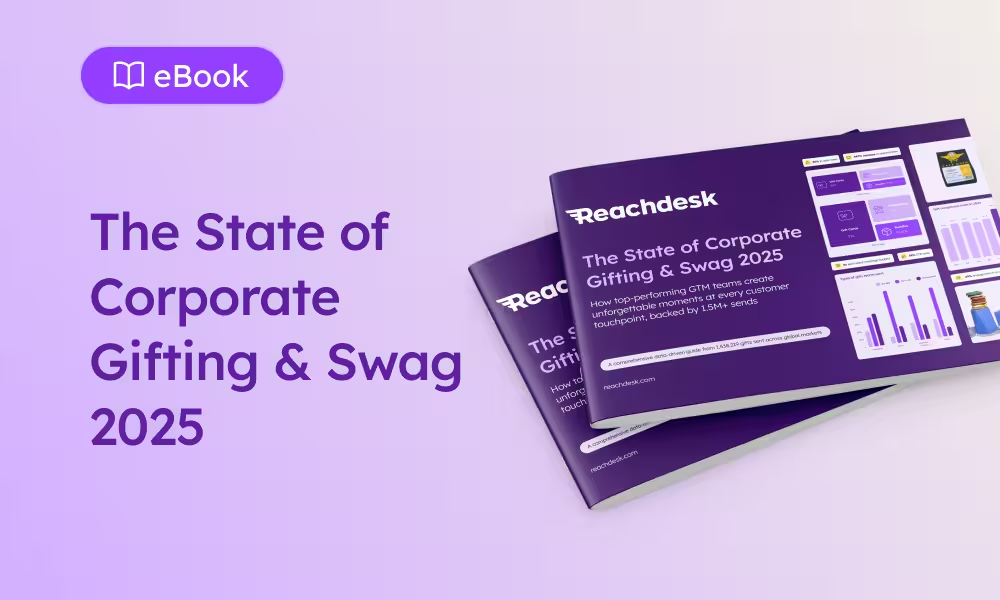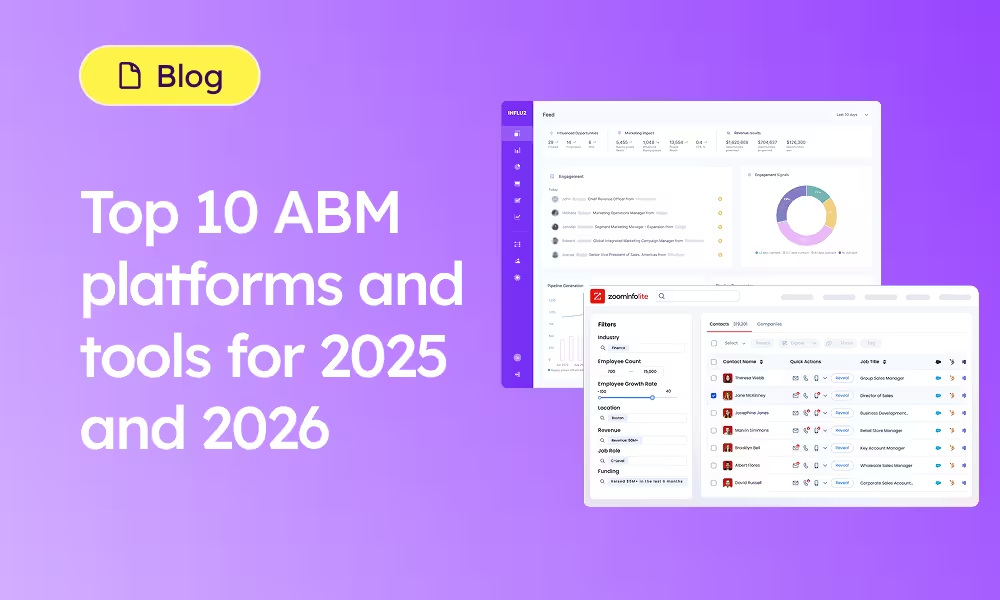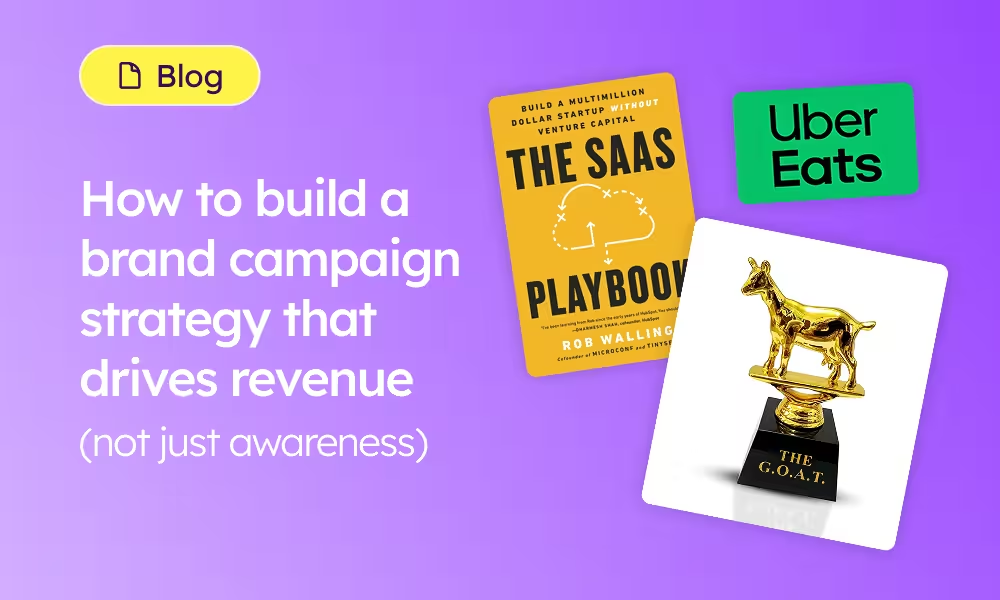One powerful platform for ROI-driven corporate gifting, swag, and engagement at scale.
Being a Business Development Representative (BDR) isn’t for the faint of heart. Mastering BDR skills like juggling high targets to navigating objections and rejections, is a challenge that demands creativity, persistence, and strategy.
But despite the pressures and challenges, the best BDRs thrive because they embrace the right tools and tactics. Whether you’re a seasoned pro or just starting out, these hard-earned BDR best practices will help you break into target accounts, hit your goals, and elevate your success.
How can BDRs break into key accounts?
1. Personalize your outreach to break through the noise
When the average prospect receives over 120 emails per day, standing out is non-negotiable. The solution? Personalization–especially on a global scale. Gone are the days of "spray and pray." Today, breaking into target accounts requires thoughtful and tailored messaging.
Account-Based Marketing (ABM) is a key strategy for effective outreach, and research shows:
- 87% of marketers say that ABM delivers higher ROI than other marketing strategies.
- 80% of buyers demand personalized content before making a purchase.
- Companies that implement ABM see a 171% increase in average deal size.
Personalization starts with smart research—understanding your prospect’s company, role, and challenges. Tailor your outreach to speak directly to their needs and pain points. The goal isn’t just to send a message; it’s to make your prospect feel like you’ve crafted something just for them.
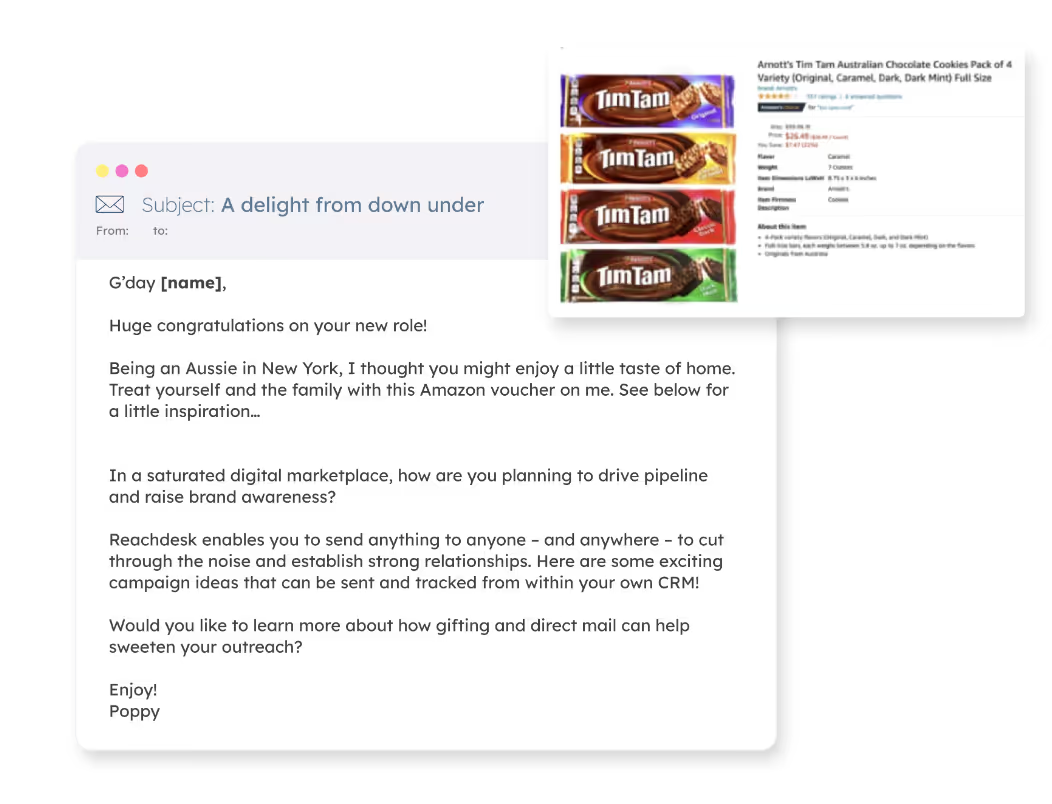
2. Time your outreach perfectly with intent data
One of the most impactful BDR tips is to perfect your timing. Timing is everything when trying to break into key accounts. Use intent data and social signals to spot the perfect moment to connect.
Tools like LinkedIn, Champify, and 6sense provide insights into which accounts are actively exploring solutions like yours. This allows you to prioritize high-value prospects and engage when they’re most likely to respond—no more guessing games.
Keep an eye out for these triggers to stay top of mind:
- Career milestones: Promotions, awards, or company achievements.
- Personal interests: Hobbies, events, or causes shared online.
- Engagement signals: Interaction with your company, events, or content.
For instance, if a prospect mentions running a marathon, send a branded water bottle with a note: “Let’s go the extra mile together!” This thoughtful gesture shows you’re paying attention and reaching out at the right time.
When you combine intent data with timely, relevant outreach, you’re not just sending messages—you’re creating meaningful connections. Timing truly is everything!
🤔 Not sure what to send?
Reachdesk Marketplace has you covered with over 8,000+ physical and eGift options. Plus, with address confirmation, you’ll never have to worry about capturing the right delivery address again.
3. Use gifting to break into key accounts
Want to stand out in a crowded inbox? Corporate gifting can help you create curiosity, open doors, and build rapport. Thoughtful, personalized gifts—like a coffee set for caffeine lovers or branded cookies—make your outreach memorable, human, and impactful.
But not every gift will convert. Here’s our top tips for effective gifting:
- Be strategic: Use gifts during key touchpoints, like before a demo or as a follow-up to a meeting.
- Make it relevant: Tailor the gift to their interests or needs. If they love scuba diving, send a diving-themed book with a clever note.
- Use corporate gifting tools: Platforms like Reachdesk simplify the process by integrating with your toolstack, automating delivery and ensuring gifts align with your ABM strategy.
Remember, gifting isn’t just about sending packages—it’s about breaking into target accounts by building connections. A small treat (like brownies or cookies) can make your pitch more digestible when paired with a solution that solves your prospect’s challenges.
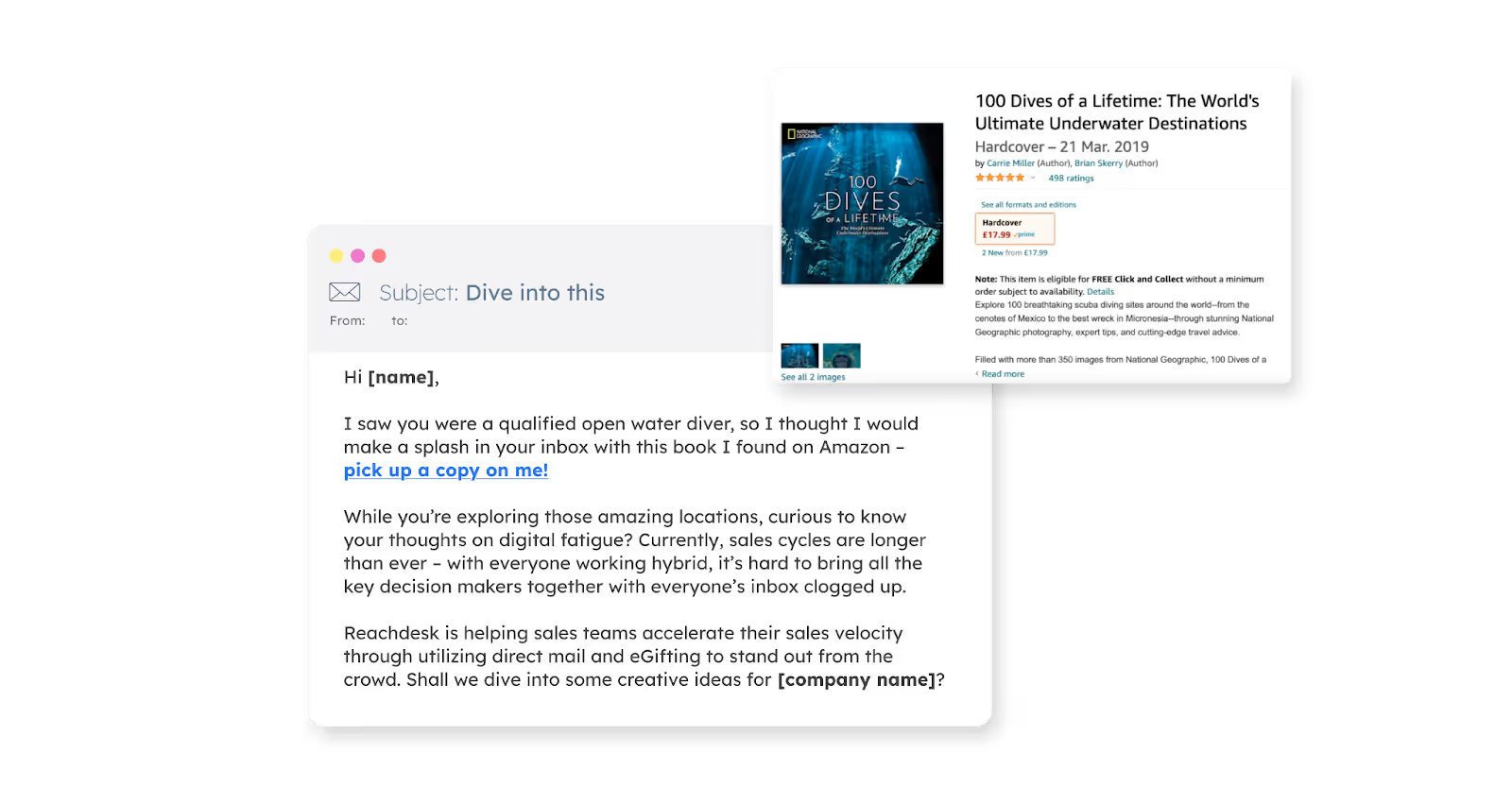
4. Focus on relationships, not transactions
Here’s a mantra: Don’t expect anything in return. Corporate gifting should never feel like bribery. Instead, focus on creating meaningful moments. For example:
- Host a "lunch and learn" by sending a meal gift card before your meeting.
- Celebrate milestones, like promotions or company anniversaries, with thoughtful gifts.
- Thank your prospect for attending a demo by treating them to a coffee—your way of saying, "Thanks a latte! Here’s to our brewing partnership."

At its core, the corporate gift is about showing that you value them and their time, not just selling your solution.
5. Speak directly to their pain points
A personalized gift is powerful, but it’s only a door-opener. To truly engage your prospect, you need to demonstrate a deep understanding of their challenges and explain how your solution solves them.
Ask yourself:
- What problem does this prospect need to solve?
- How can I show that my product is the best fit for their specific needs?
The corporate gift builds the relationship, but your tailored messaging seals the deal.
The anatomy of a high-performing email
You already know that a great email grabs attention, builds rapport, and drives action. Here's a recap of how to create one that delivers real results:
- Subject line: Keep it short, specific, and intriguing. E.g., "Breaking into your ABM goals?"
- First sentence: Show that you’ve done your homework and care about their success.
- Tie-in gift: Reference your gift to create curiosity and make your message stand out. Address pain points: Highlight a challenge they’re facing and how your solution can help.
- Close with a question: Make it actionable to drive the next step in the conversation.
For example:
"Hi [Name], I noticed your recent post about [specific topic]. To help tackle [specific challenge], I’d love to send over a [gift]. Let’s connect to explore how [your solution] can help you break into key accounts faster!"
And here’s one of our complete email examples to inspire your next outreach:
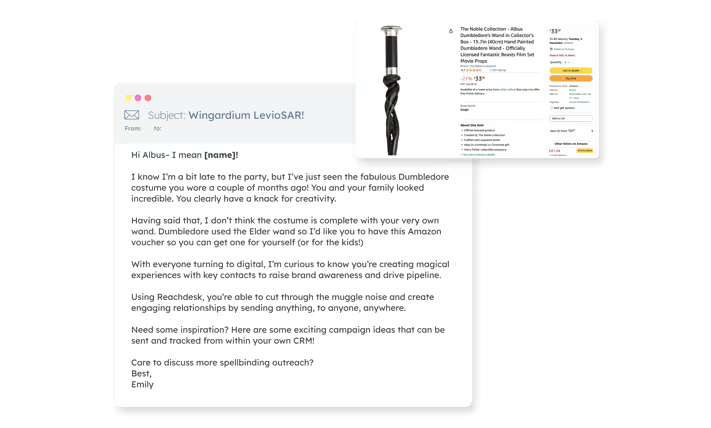
3 BDR trends to help you stay ahead in 2025 and beyond
To crush it as a BDR in 2025, you’ll want to keep an eye on these game-changing trends:
1. AI for hyper-personalized outreach
Use AI tools like HubSpot’s AI-powered CRM, Salesforce Einstein, or Outreach.io to dive deep into your accounts' behavior and tailor your outreach to stay relevant. It’s not just about [inserting a name]—it’s about understanding what keeps your prospect up at night, what challenges they face, and what they care about. When you can personalize your messaging this way, you’re not just another email in their inbox; you’re someone who truly gets them.
2. Sustainable corporate gifting is a must
More and more people are looking for brands that align with their values—especially when it comes to the environment. Sustainable corporate gifting is one trend that’s definitely here to stay. Whether it’s eco-friendly products or gifts with recyclable packaging, offering green options shows that your company cares about the planet. Plus, it’s a great way to connect with prospects who are passionate about sustainability, and who doesn’t want to be known for making a positive impact?
3. Multi-channel is essential for prospect engagement
You need to meet your prospects where they are. Using just one channel (like email) won’t get you far anymore. You’ve got to engage on multiple fronts—email, social media, gifting, and more. For example, follow up an email with a thoughtful gift or interact with them on LinkedIn. By reaching out in different ways, you’re increasing your chances of getting noticed, starting conversations, and staying top of mind.
Learn more with our BDR Best Practices webinar.
For more tips and real-life examples, watch our on-demand webinar featuring top BDR leaders below. Learn how to refine your strategies, build relationships, and break into target accounts like a pro.
Ready to open doors and build relationships with corporate gifting? Schedule your Reachdesk demo now.


